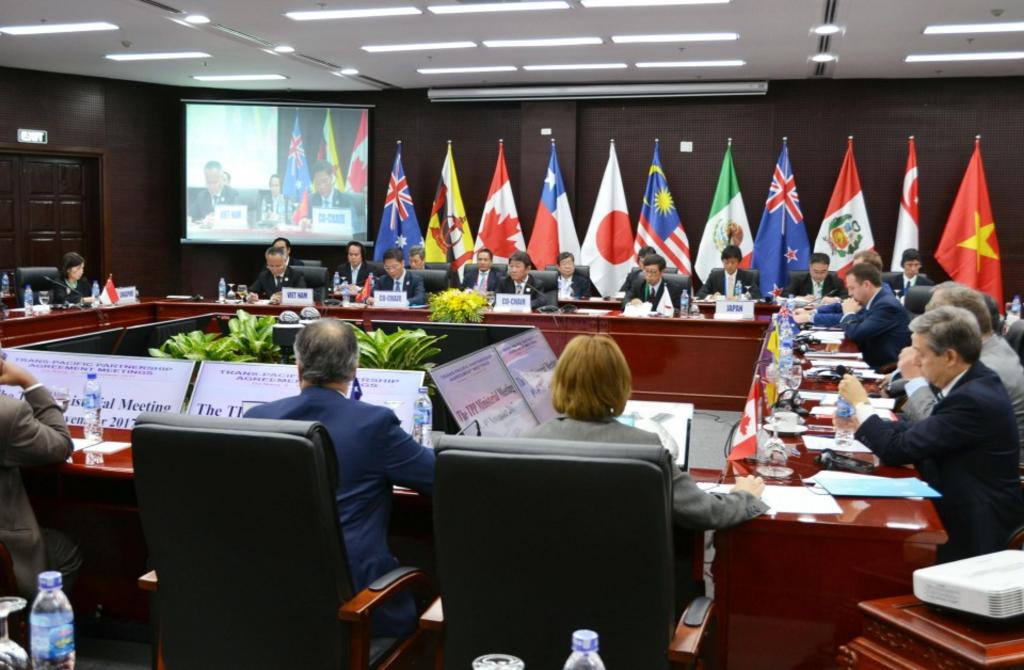US President Donald Trump on Thursday said he would rejoin the Trans-Pacific Partnership trade deal, which he decided to exit back in January 2017, if “we made a much better deal than we had”.
“I would do TPP if we were able to make a substantially better deal,” he said in an interview with CNBC at the World Economic Forum in Davos.
The 11 remaining TPP members just Tuesday set a date for signing a revised version of the deal. Trump had previously refused to rejoin the trade pact despite repeated calls by Japanese Prime Minister Shinzo Abe, choosing instead to focus on bilateral agreements. But he appears to have changed tack amid pressure from US business leaders.
Trump did not comment on specific conditions for a return. Trump is expected to call for “reciprocal trade” in the speech, seeking to reduce America’s huge trade deficit. With his mention of a “substantially better deal” for the US as a condition for a return to the TPP, the 11 remaining members face negotiations with a hard-line Trump administration.
The future actions of Trump, who calls himself a deal-maker, are hard to predict. And there are uncertainties over how the remaining TPP members will react to a potential US return. In any case, for a Trump administration that has announced an exit from the Paris Agreement on climate change and has shown a tendency to shun global cooperation, rejoining the TPP would be a first step toward the nation once again getting involved in the crafting of international frameworks.
The 11 countries are scheduled to sign an agreement in March. This would lead to a free trade zone making up 13% of the world’s gross domestic product, but the figure would jump to 40% if the US participates. Since the TPP is positioned as a way to counter China, which is expanding its own economic sphere, a US return would also mark a major shift in America’s Asia policy.
Asia Puzzled
Asian countries responded to Trump’s sudden expression of openness to the TPP pact with both hopes and skepticism, as officials and investors try to figure out what the “deal-maker” president is driving at.
While leaders of Japan and Australia voiced guarded optimism, most Asian countries remained silent, waiting for further clarification in a speech Trump was expected to deliver at the World Economic Forum in Davos, Switzerland, later on Friday.
Sue Trinh, head of Asian currency research at RBC Capital Markets, said, “It’s sort of worrying how easily he seems to flip and flop in terms of his stance.”
Tokyo has to strike a delicate balance between engaging Trump in the TPP and maintaining unity among the 11 Pacific countries that have opted to forge a free trade deal without the US, known as TPP-11.
Japan has led the effort to bring about free trade among the TPP-11 countries, which include Australia, Canada, Malaysia and Singapore.
“The terms of the TPP-11 have already been decided on, and we think our priority is bringing this TPP-11 into force,” Japan’s TPP Minister Toshimitsu Motegi said Friday, while “welcoming the fact that the US has recognized the significance of the TPP.”
Australia is more skeptical about the prospects of an early return of the US to the negotiations.
“I don’t expect the US to join the TPP anytime soon. We’re certainly not counting on it,” said Australian Prime Minister Malcolm Turnbull.
Following Trump’s remarks, the dollar rallied in Asia on receding fears of a global trade war. The gains were shaved toward the end of the day, however. The dollar jumped as high as 109.77 yen from an overnight low of 108.50, before easing to around 109 yen.
Stocks in Hong Kong closed sharply higher, while those in Tokyo gave up early gains to close modestly lower. Markets in Australia and India were closed for a holiday Friday, which dampened overall activity.


